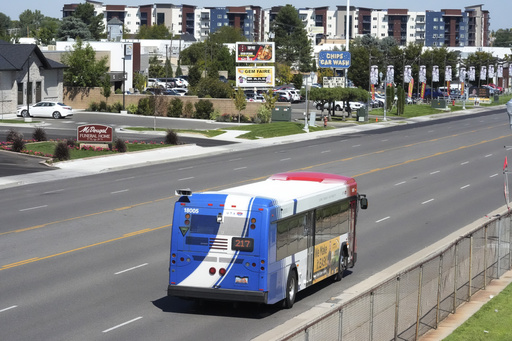Following a bus during rush hour in Salt Lake City may be the ticket to avoiding red lights, thanks to a sophisticated system that allows buses to communicate directly with traffic signals in the area. This system requests additional green light time when buses approach, resulting in smoother traffic flow on these smart streets. This innovation is just a glimpse of the high-tech advancements planned for roads not just in Utah but also across the U.S.
With a $20 million federal grant and the vision to “Connect the West,” transportation authorities aim to enable every vehicle in Utah, as well as in neighboring Colorado and Wyoming, to communicate with each other and with roadside infrastructure regarding congestion, accidents, road conditions, and weather. This connectivity would empower drivers to receive real-time information, eliminating the need for manual alerts to electronic signs or mapping apps.
The technology, known as vehicle-to-everything (V2X), allows cars to share data with each other and roadside sensors in real-time. The U.S. Department of Transportation recently unveiled a national blueprint to guide the implementation of V2X projects to enhance road safety and reduce accidents, which have reached alarming levels in recent years.
V2X deployment could prevent hundreds of thousands of crashes and save numerous lives, according to the National Highway Traffic Safety Administration. The push for this technology has been fueled by individuals like Dan Langenkamp, who advocates for road safety improvements following the tragic loss of his wife in a road accident.
Privacy concerns have been a primary point of contention for the V2X rollout. While efforts are made to protect personal data, critics worry that the system could potentially identify drivers and their travel patterns based on vehicle data. Despite the resistance, the federal blueprint outlines targets for equipping signalized intersections with V2X technology, with Salt Lake City leading the way.
Implementing V2X technology involves upgrading both traffic signals and vehicles themselves. Utah has piloted radio-based connected vehicle technology, demonstrating tangible benefits such as reduced traffic congestion and improved safety. While these changes may go unnoticed by drivers, the impact on traffic efficiency can be significant.
Technological advancements aren’t limited to Utah; Michigan and Texas are also embracing smart road initiatives. Michigan has opened a connected vehicle corridor on Interstate 94, while Texas is implementing a smart freight corridor to inform truck drivers about road conditions. These projects aim to revolutionize road safety and traffic management through seamless communication between vehicles and infrastructure.
Companies like Cavnue are at the forefront of smart road technology development. They view V2X as a crucial safety measure for vehicles, emphasizing the importance of standardized communication between cars and roadside infrastructure. The goal is for all components of the transportation system to speak a unified digital language for enhanced road safety and efficiency.


